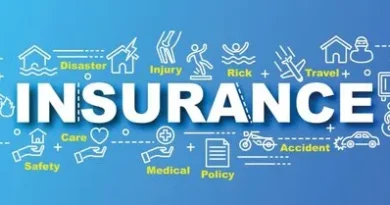Free Key Accounts Service Manager Course (6Months)
Key Accounts Service Manager:
Brief Job Description

A Key Account Service Manager is responsible for the proper co-ordination of management and development of key accounts within the region, to maintain and ensure customer satisfaction, drive business growth and achieve sales targets. The individual is responsible for managing availability of spare parts and their proper maintenance.
Personal Attributes
The individual should have good understanding of institutions (fleet owners, army, government etc.) including the special service benefits awarded while selling vehicles. The individual should have good interpersonal and communication skills to ensure quick resolution of their complaints through better liaisoning with various stakeholders like OEM, Spare parts distributor etc. to ensure higher customer satisfaction.

Plan and organise work to meet expected outcomes:
Elements and Performance Criteria
Work requirements including various activities within the given time and set quality standards
To be competent, the user/individual on the job must be able to:
PC1. keep immediate work area clean and tidy
PC2. treat confidential information as per the organisations guidelines
PC3. work in line with organisations policies and procedures
PC4. work within the limits of job role
PC5. obtain guidance from appropriate people, where necessary
PC6. ensure work meets the agreed requirements
Appropriate use of resources
To be competent, the user/individual on the job must be able to:
PC7. establish and agree on work requirements with appropriate people
PC8. manage time, materials and cost effectively
PC9. use resources in a responsible manner
Knowledge and Understanding (KU)
The individual on the job needs to know and understand:
KU1. the organisations policies, procedures and priorities for area of work, role and responsibilities in carrying out that work
KU2. the limits of responsibilities and when to involve others
KU3. specific work requirements and who these must be agreed with
KU4. the importance of having a tidy work area and how to do this
KU5. how to prioritize workload according to urgency and importance and the benefits of this
KU6. the organisations policies and procedures for dealing with confidential information and the importance of complying with these
KU7. the purpose of keeping others updated with the progress of work
KU8. who to obtain guidance from and the typical circumstances when this may be required
KU9. the purpose and value of being flexible and adapting work plans
KU10. how to complete tasks accurately by following standard procedures
KU11. technical resources needed for work and how to obtain and use
these
Generic Skills (GS)
User/individual on the job needs to know how to:
GS1. write in at least one language
GS2. read instructions, guidelines/procedures
GS3. ask for clarification and advice from appropriate persons
GS4. communicate orally with colleagues
GS5. make a decision on a suitable course of action appropriate for accurately completing the task within resources
GS6. agree objectives and work requirements
GS7. plan and organise work to achieve targets and deadlines
GS8. deliver consistent and reliable service to customers
GS9. check own work and ensure it meets customer requirements
GS10. anomalies to the concerned persons
GS11. analyse problems and identify work-arounds taking help from
GS12. apply own judgement to identify solutions in different situations
Work effectively in a team:
Elements and Performance Criteria
Effective communication
To be competent, the user/individual on the job must be able to:
PC1. maintain clear communication with colleagues
PC2. work with colleagues
PC3. pass on information to colleagues in line with organisational requirements
PC4.. work in ways that show respect for colleagues
PC5. carry out commitments made to colleagues
PC6. let colleagues know in good time if cannot carry out commitments, explaining the reasons
PC7. identify problems in working with colleagues and take the initiative to solve these problems
PC8. follow the organisations policies and procedures for working with colleagues
PC9. ability to share resources with other members as per priority of tasks
Knowledge and Understanding (KU)
The individual on the job needs to know and understand:
KU1. the organisations policies and procedures for working withcolleagues, role and responsibilities in relation to this
KU2. the importance of effective communication and establishing goodworking relationships with colleagues
KU3. different methods of communication and the circumstances inwhich it is appropriate to use these
KU4. benefits of developing productive working relationships withcolleagues
KU5. the importance of creating an environment of trust and mutualrespect
KU6. whether not meeting commitments, will have implications onindividuals and the organisation
KU7. different types of information that colleagues might need and theimportance of providing this information when it is required
KU8. the importance of problems, from colleagues perspective andhow to provide support, where necessary, to resolve these
Generic Skills (GS)
User/individual on the job needs to know how to:
GS1. complete well written work with attention to detail
GS2. read instructions, guidelines/procedures
GS3. listen effectively and orally communicate information
GS4. make decisions on a suitable course of action or response
GS5. plan and organise work to achieve targets and deadlines
GS6. check that the work meets customer requirements
GS7. deliver consistent and reliable service to customers
GS8. apply problem solving approaches in different situations
GS9. apply balanced judgements to different situations
GS10. apply good attention to detail
GS11. check that the work is complete and free from errors
GS12. get work checked by peers
GS13. work effectively in a team environment

Maintain a healthy,safe and secure working environment:
Elements and Performance Criteria
Resources needed to maintain a safe, secure working environment
To be competent, the user/individual on the job must be able to:
PC1. comply with organisations current health,safety and security policies and procedures
PC2. report any identified breaches in health,safety, and security policies and procedures to the designated person
PC3.. Coordinate with other resources at the workplace to achieve the healthy, safe and secure environment for all incorporating all government norms esp. for emergency situations like fires,earthquakes etc.
PC4. identify and correct any hazards like illness, accidents, fires or any other natural calamity safely and within the limits of individuals authority
PC5. report any hazards outside the individuals authority to the relevant person in line with organisational procedures and warn other people who may be affected
PC6. follow organisations emergency procedures for accidents, fires or any other natural calamity
PC7. identify and recommend opportunities for improving health,safety, and security to the designated person
PC8. complete all health and safety records are updates and procedures well defined
Knowledge and Understanding (KU)
The individual on the job needs to know and understand:
KU1. legislative requirements and organisations procedures for health, safety and security and individuals role and responsibilities in relation to this
KU2. what is meant by a hazard, including the different types of health and safety hazards that can be found in the workplace
KU3. how and when to report hazards
KU4. the limits of responsibility for dealing with hazards
KU5. the organisations emergency procedures for different emergency situations and the importance of following these
KU6. the importance of maintaining high standards of health, safety and security
KU7. implications that any non-compliance with health, safety and security may have on individuals and the organisation
KU8. different types of breaches in health, safety and security and how and when to report these
KU9. evacuation procedures for workers and visitors
KU10. how to summon medical assistance and the emergency services,where necessary
KU11. how to use the health, safety and accident reporting procedures and the importance of these
Generic Skills (GS)

User/individual on the job needs to know how to:
GS1. complete accurate, well written work with attention to detail
GS2. read instructions, guidelines/procedures/rules
GS3. listen and orally communicate information
GS4. make decisions on a suitable course of action or response
GS5. plan and organise work to achieve targets and deadlines
GS6. build and maintain positive and effective relationships withcolleagues and customers
GS7. apply problem solving approaches in different situations
GS8. analyse data and activities
GS9. apply balanced judgements to different situations
GS10. apply good attention to detail
GS11. check that the work is complete and free from errors
GS12. get work checked by peers
GS13. work effectively in a team environment

Manage customer relationship and quality service:
Elements and Performance Criteria
Manage the total customer satisfaction with enriching & pleasant customer experience
To be competent, the user/individual on the job must be able to:
PC1. . analyse and comprehend all customer requirements and needs PC2. . document complete customer requisites and assess them PC3. . deliver and assist in delivering as per the noted requirements PC4. . understand complete customer queries and complaints
PC5. . document all customer queries in the prescribed format of the organisation PC6. ensure least turnaround time for any customer query handling/redressal especially issues related to warranty claims and other performance related issues
PC6.. ensure least turnaround time for any customer query handling/redressal especially issues related to warranty claims and other performance related issues
PC7. . maximise customer satisfaction through pleasant and excellent customer experience within the organisations framework
PC8. . document feedbacks and reviews from the customers & implement within the framework of the organization
PC9. . maintain a healthy & professional relationship with the customers especially key accounts and influencers in the market
Knowledge and Understanding (KU)
The individual on the job needs to know and understand:
KU1. standard operating procedures within ones own organisation
KU2. standard operating procedures for query and complaint reporting along with their redressal mechanism in the organisation
KU3. framework and guidelines as prescribed by the organisation for query and complaint redressal
KU4. customer Relationship Management (CRM) related framework provided by the organisation
KU5. terms & conditions agreed between the respective auto component/ aggregate and the various OEMs/ OEM channel partners for supply, procurement of the various auto components/ aggregates
KU6. documentation requirements for each procedure carried out as part of roles and responsibilities as per the organizational guidelines
KU7. organisational and professional code of ethics and standards of practice
KU8. safety and health policies and regulations for the workplace
KU9. the technical specifications of various OEM vehicles and the different variant/ model of auto components/ aggregates used along with those of the competitor auto component manufacturer
KU10. detailed technical and performance specifications of the auto component for various OEM vehicles
KU11. how to collaborate with the organizational manufacturing engineering, product management teams along with the service team of the respective OEM vehicle and local channel partner service team
KU12. documentation requirements from the customers with respect to warranty claims and other performance related feedback on the for respective OEM vehicle
KU13. requirements of the customers and suggest delivery accordingly
KU14. software or format such as MS word, excel, PowerPoint and Management Information System (MIS)
KU15. software or format used to capture for Customer Relationship Management (CRM) within the organisation
KU16. how to capture customer voice/ feedback on the auto components/ aggregates for various OEM vehicles on price, performance, availability of spares, warranty & other service-related aspects etc.
Generic Skills (GS)
User/individual on the job needs to know how to:
GS1. create documents required on the job (including database on key customers/ accounts and major retailers, response or feedback forms, customer-query sheets, response or feedback sheets etc.)
GS2. either write or get it done from subordinates, a detailed failure report analysis in case of a failed component/ aggregate escalating to the auto component manufacturer
GS3. write in at least one language
GS4. read feedback from customers on warranty and other performance related aspects
GS5. read the specific requirements, queries that the customer may have on various auto components including any specific technical query
GS6. read brochures and technical specifications of the vehicle provided by the OEM and channel partner (Dealership)
GS7. read policies and regulations pertinent to the job
GS8. interact with the customers for getting their requirements, queries and feedbacks
GS9. interact with organisations internal stakeholders for efficient customer relationship management interact with team members to work efficiently
GS10. analyse information and evaluate results to choose the best solution and solve problems
GS11. analyse any potential issue that may affect the performance of the vehicle and convey it in a timely manner
GS12. plan work assigned on a daily basis
GS13. follow up regularly on potential complaints, issues raised by the customer
GS14. ensure that customer needs are assessed and satisfactory service is provided
GS15. ensure that performance of the auto component is up to the mark and any pending issues or complaints are resolved in a timely manner according to the terms & conditions mandated by either the OEM or the auto component manufacturer
GS16. analyse all the complaints, queries or issues raised by the customers to either the OEM channel partner/ auto component dealer/ retailer in the market
GS17. deliver and act as per the organisation provided/guided resolutions
GS18. liaise with all stakeholders to ensure hassle-free resolution of the complaints by the concerned customer in a timely fashion
GS19. evaluate and identify areas of complaints from the customer affecting the performance of his vehicle
GS20. assess time and cost required for customer resolution based on complaints, problems or queries identified
GS21. evaluate and identify key customer experience enhancing areas
GS22. evaluate the information gathered from the customer complaint report and utilise it to identify timely resolutions
GS23. evaluate the information gathered from the market (including retail segment, key accounts/ customers and OEM along with the OEM channel partners) and use it to ensure higher customer satisfaction
Supervise services support to institutional customers:
Elements and Performance Criteria
Supervise overall service support to key / Institutional customers
To be competent, the user/individual on the job must be able to:
PC1. . monitor and gather proper information about OEM products functioning and generate reports on them
PC2. . determine the most crucial needs of these key customers and carries them out to ensure that they receive first-class customer care and service
PC3. . conduct market analysis and research on the dynamics of the account
PC4.. report to and work closely with the regional sales and customer service manager to provide regular reports on progress towards targets and deputise as required
PC5.. maintain a detailed knowledge of the products and services offered within the region PC6.. proactively maintain and build positive relationships with the sales and services function PC7. . conduct business reviews, making presentations, undertaking relationship reviews,
responding to customer issues and proactively developing customer relationships
PC8. . maintain a thorough understanding of the key accounts activities relating to OEM products and their key issues
PC9. . ensure proper growth of the business with key accounts – responding to prequalification questionnaires, submitting bids/proposals including unsolicited, preparing tenders, proposals for additional services, up-selling and crossselling, leading tender vets/bid teams, and identifying all opportunities to improve and widen services to the customers
PC10.. liaise work with the sales, customer service and the marketing teams, such as to progress relevant opportunities uncovered, actively proposing and contributing to initiatives relevant key accounts, to take over accounts which have be won/grown
PC11. . assist sales and service function for proper maintenance of the customer database, ensuring all customer contact details are kept up to date
PC12.. liaise with the national accounts team regarding relevant national accounts, e.g. regarding accounts to be handed over to/from national accounts, or to offer/seek joint working and support
PC13. . contribute and to comply with the organizations policies and procedures related with OEM products and services
PC14. . manage service level agreements through reporting and reviews including identifying exceptions and corrective actions
Knowledge and Understanding (KU)
The individual on the job needs to know and understand:
KU1. standard operating procedures of the organisation/ dealership about service marketing process
KU2. documentation requirements for each procedure carried out as part of roles and responsibilities
KU3. organisational and professional code of ethics and standards of practice
KU4. safety and health policies and regulations for the workplace
KU5. how to conduct market research identify market requirements for OEM products
KU6. how to develop effective strategies for service offerings of OEM product
KU7. how to explain value proposition of the products to the sales team
Generic Skills (GS)
User/individual on the job needs to know how to:
GS1. create documentation required on the job (reports of data collected, etc.)
GS2. write in at least one language
GS3. read brochures and technical specifications of the product launched
GS4. read policies and regulations pertinent to the job
GS5. interact with the service function to elicit information on service offerings of OEM products
GS6. analyse the results of research conducted on services framework and evaluate best service offering for OEM products
GS7. plan work assigned on a daily basis
GS8. interact regularly with the sales function to have proper knowledge about the implementation of service process framework
GS9. ensure that sales function has adopted services framework designed
GS10. ensure that the service process is done properly and is error free
GS11. handle unfavourable queries of customers about OEM products and identify specific maintenance techniques
GS12. analyse unique points for service process of OEM product portfolio
GS13. evaluate the information gathered from the sales function about the extent of inculcation of service process structure
Assessment Guidelines:

- Criteria for assessment for each Qualification Pack will be created by the Sector Skill Council. Each Element/ Performance Criteria (PC) will be assigned marks proportional to its importance in NOS. SSC will also lay down proportion of marks for Theory and Skills Practical for each Element/ PC.
- The assessment for the theory part will be based on knowledge bank of questions created by the SSC.
- Assessment will be conducted for all compulsory NOS, and where applicable, on the selected elective/option NOS/set of NOS.
- Individual assessment agencies will create unique question papers for theory part for each candidate at each examination/training center (as per assessment criteria below).
- Individual assessment agencies will create unique evaluations for skill practical for every student at each examination/ training center based on these criteria.
- To pass the Qualification Pack assessment, every trainee should score the Recommended Pass % aggregate for the QP.
- In case of unsuccessful completion, the trainee may seek reassessment on the Qualification Pack.








